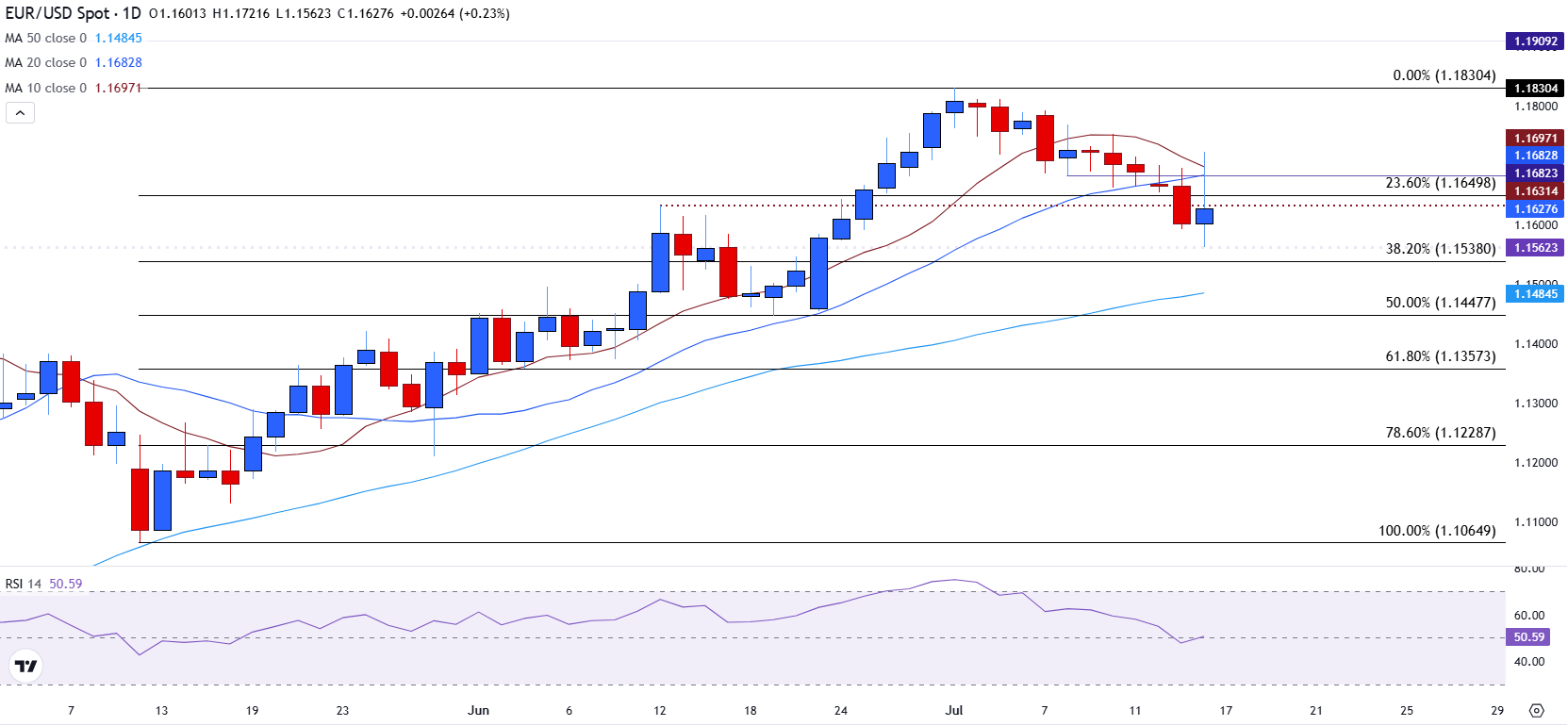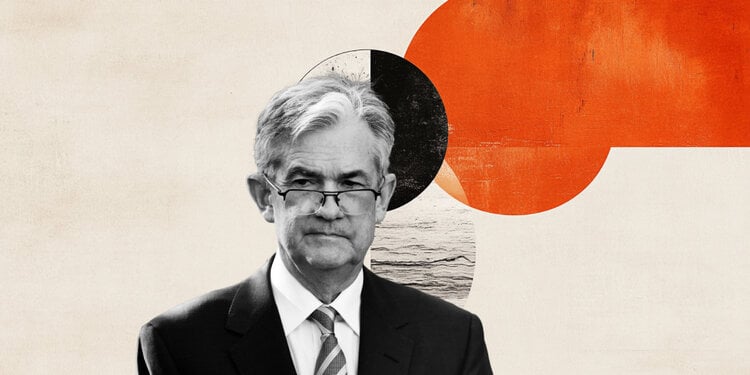- The Euro recovers against the US Dollar with concerns over the Fed’s independence limiting losses.
- EUR/USD price action recovers above 1.1600 as momentum turns neutral.
- Tariffs and trade deals remain in focus for the EUR/USD pair.
The Euro (EUR) is strengthening against its US Dollar (USD) counterpart on Wednesday, as traders shift focus to concerns surrounding the potential replacement of Federal Reserve (Fed) Chair Jerome Powell.
Following five consecutive days of losses, EUR/USD reached an intraday low at 1.1562 before recovering to trade back above 1.1600 at the time of writing.
With US President Donald Trump ramping up efforts to remove Jerome Powell as the Chairman of the Federal Reserve, concerns over the independence of the central bank are weighing on the US Dollar.
EUR/USD price action recovers with support at 1.1600
On the technical front, EUR/USD has staged a notable recovery on Wednesday, with the 1.1600 psychological level now providing support for the immediate move.
The pair is now trading near 1.1670, with the 1.1700 psychological resistance level forming an additional barrier for the short-term move. With EUR/USD moving toward the 20-day Simple Moving Average (SMA) at 1.1683, the Relative Strength Index (RSI) at that momentum remains neutral.
However, with trade talks in focus, downside risks remain. The 38.2% Fibonacci retracement level of the May-July move provides additional support at 1.1538, which could bring the 1.1500 level back into focus.
Meanwhile, the 10-day Simple Moving Average (SMA) at 1.1691 and the 20-day SMA at 1.1680 have transformed into resistance, indicating growing bearish pressure.

Meanwhile, the 50-day SMA at 1.1483 marks the next major support. Immediate downside targets lie between 1.1480 and 1.1440, where the 50-day SMA converges with the 50% Fibonacci retracement level.
US Dollar FAQs
The US Dollar (USD) is the official currency of the United States of America, and the ‘de facto’ currency of a significant number of other countries where it is found in circulation alongside local notes. It is the most heavily traded currency in the world, accounting for over 88% of all global foreign exchange turnover, or an average of $6.6 trillion in transactions per day, according to data from 2022.
Following the second world war, the USD took over from the British Pound as the world’s reserve currency. For most of its history, the US Dollar was backed by Gold, until the Bretton Woods Agreement in 1971 when the Gold Standard went away.
The most important single factor impacting on the value of the US Dollar is monetary policy, which is shaped by the Federal Reserve (Fed). The Fed has two mandates: to achieve price stability (control inflation) and foster full employment. Its primary tool to achieve these two goals is by adjusting interest rates.
When prices are rising too quickly and inflation is above the Fed’s 2% target, the Fed will raise rates, which helps the USD value. When inflation falls below 2% or the Unemployment Rate is too high, the Fed may lower interest rates, which weighs on the Greenback.
In extreme situations, the Federal Reserve can also print more Dollars and enact quantitative easing (QE). QE is the process by which the Fed substantially increases the flow of credit in a stuck financial system.
It is a non-standard policy measure used when credit has dried up because banks will not lend to each other (out of the fear of counterparty default). It is a last resort when simply lowering interest rates is unlikely to achieve the necessary result. It was the Fed’s weapon of choice to combat the credit crunch that occurred during the Great Financial Crisis in 2008. It involves the Fed printing more Dollars and using them to buy US government bonds predominantly from financial institutions. QE usually leads to a weaker US Dollar.
Quantitative tightening (QT) is the reverse process whereby the Federal Reserve stops buying bonds from financial institutions and does not reinvest the principal from the bonds it holds maturing in new purchases. It is usually positive for the US Dollar.

